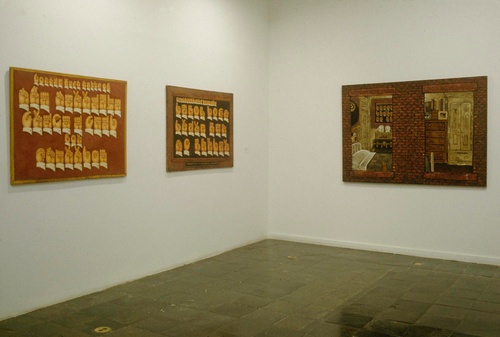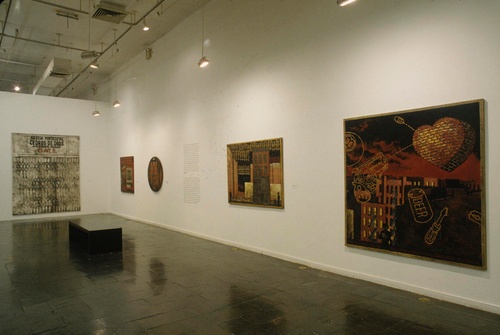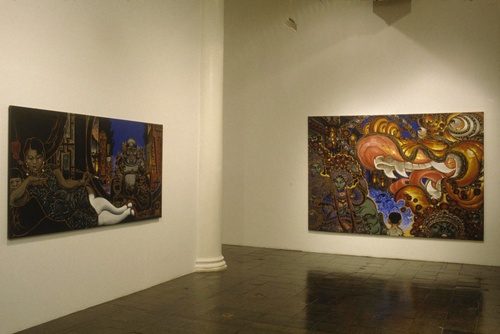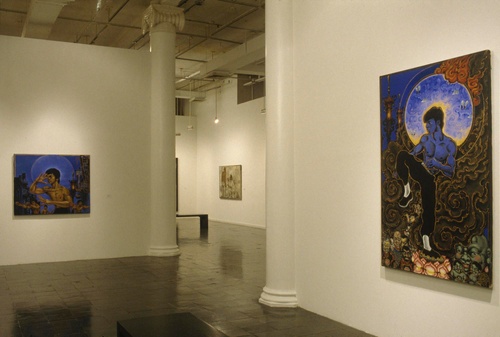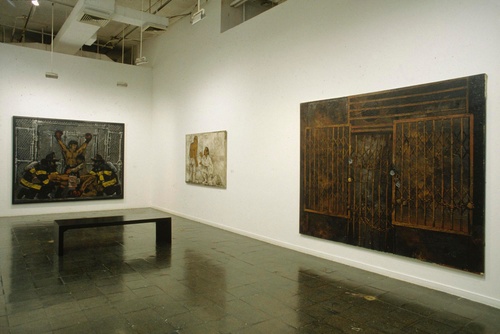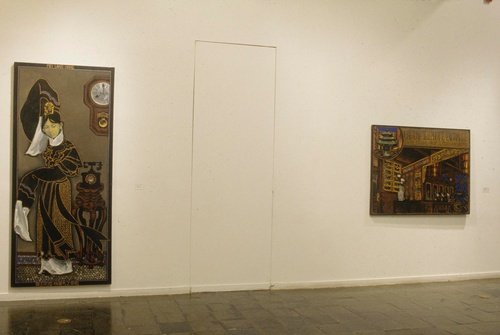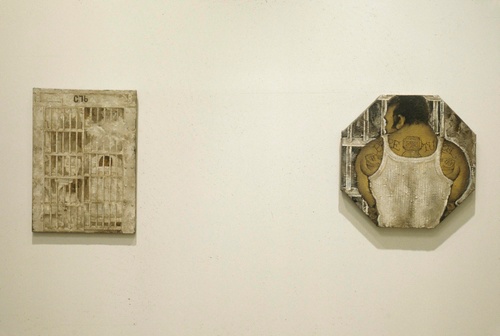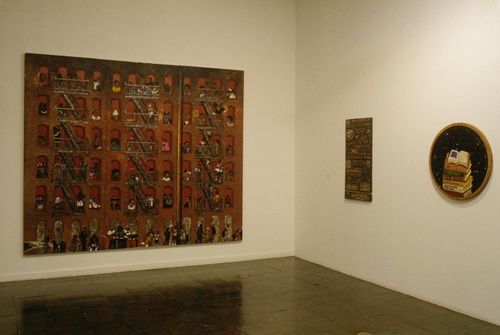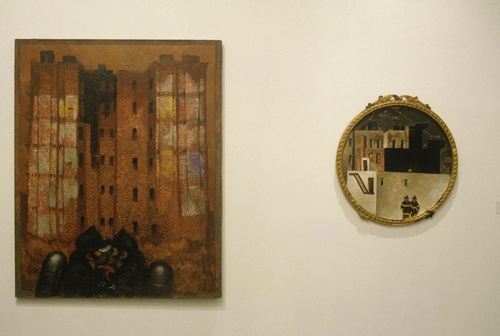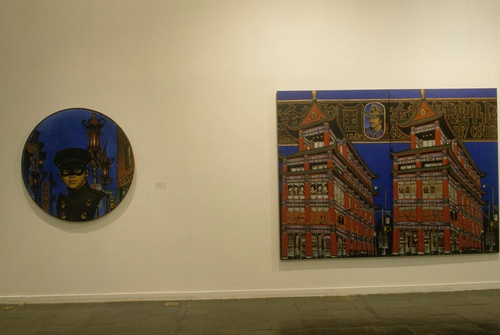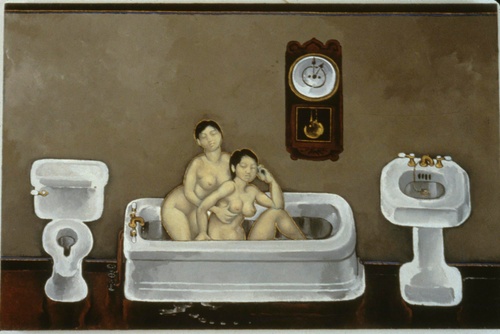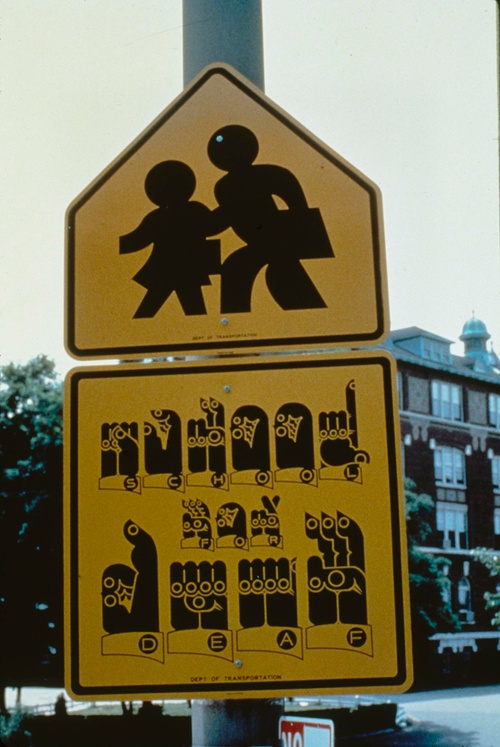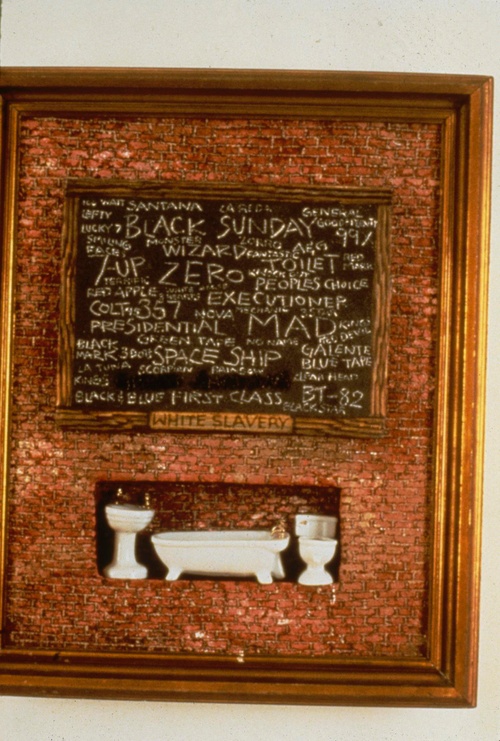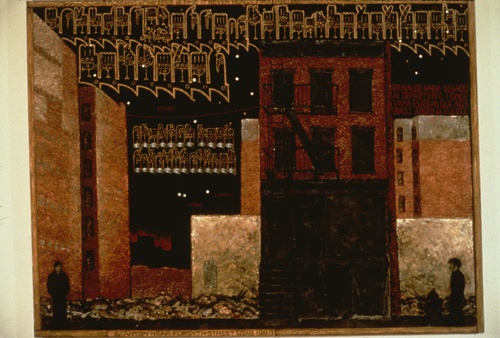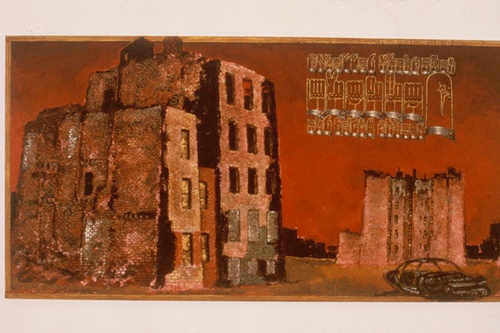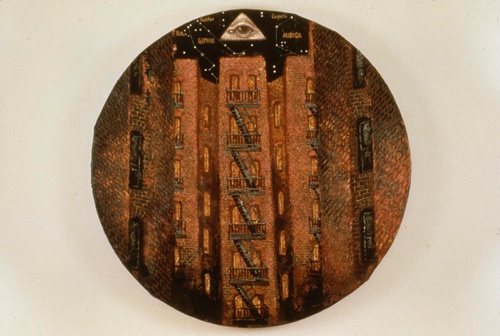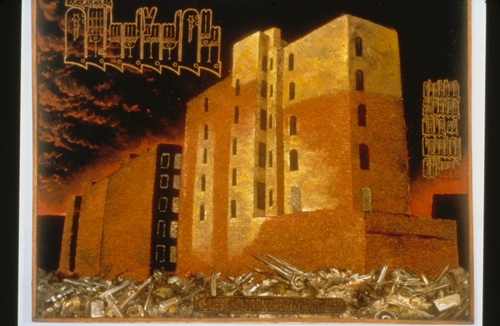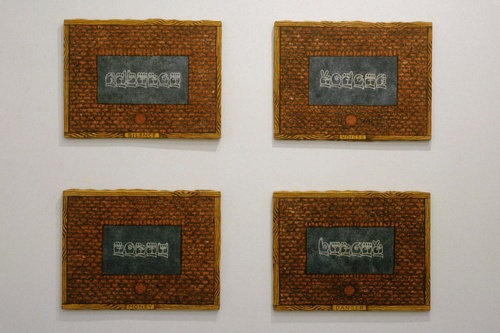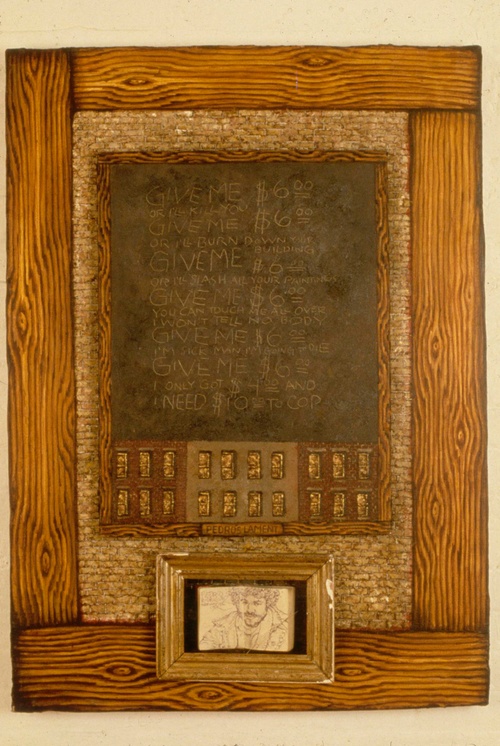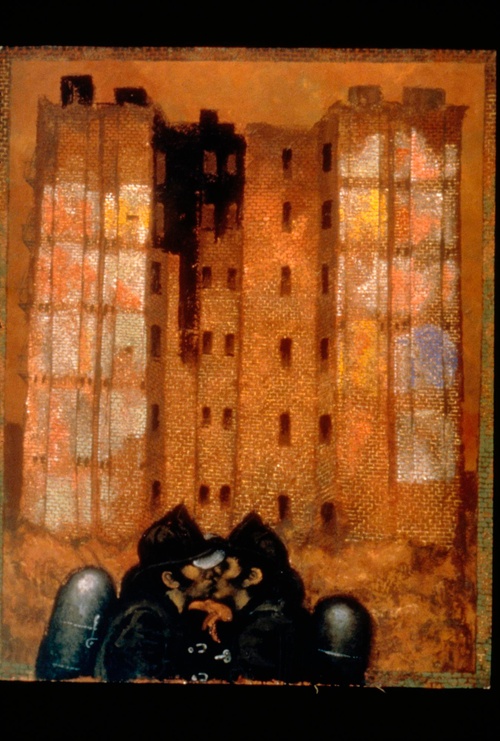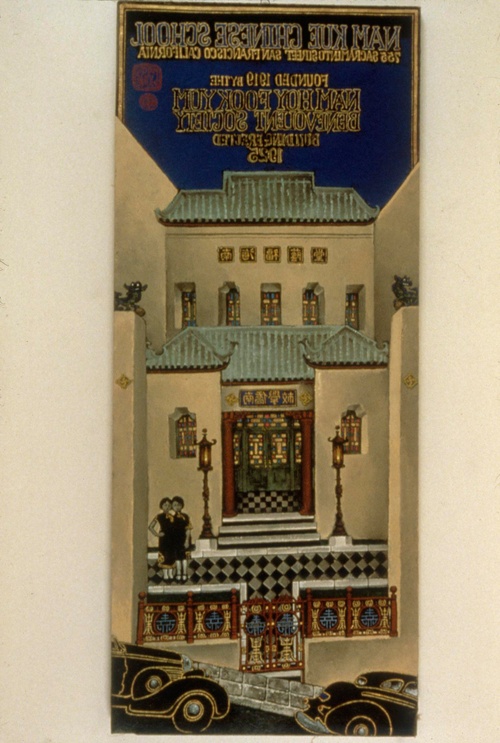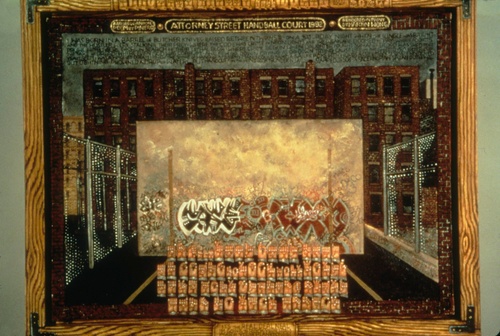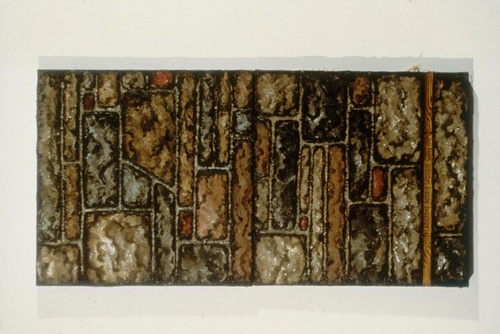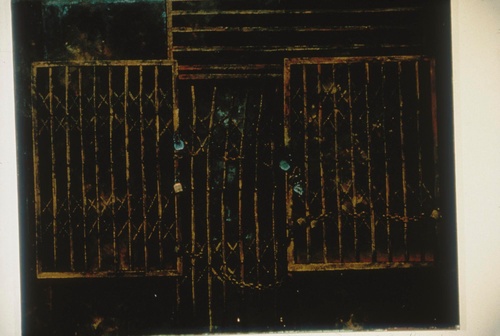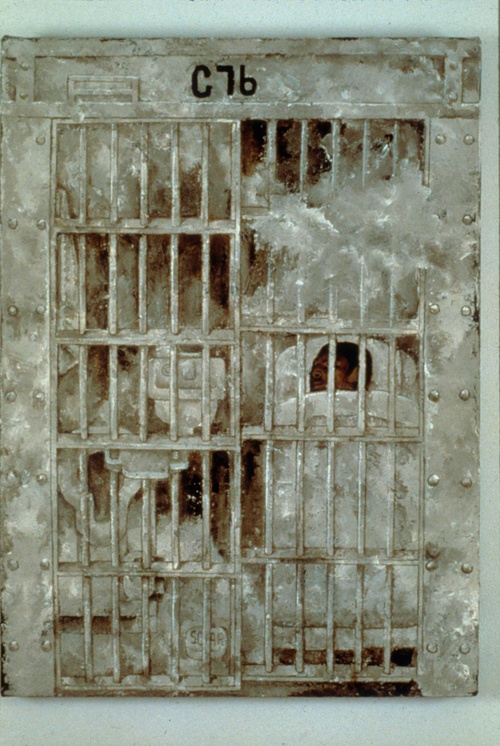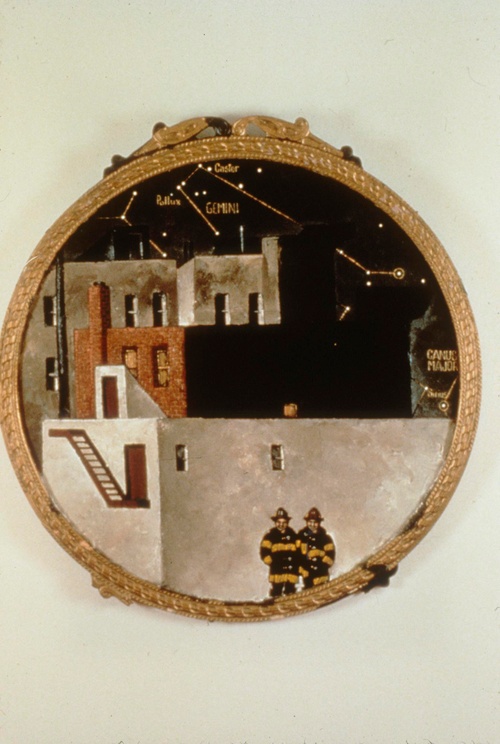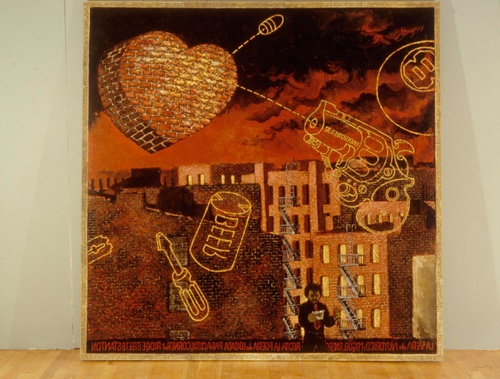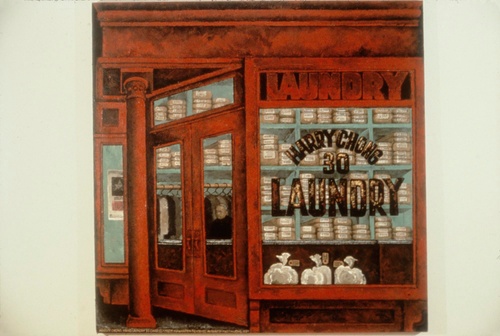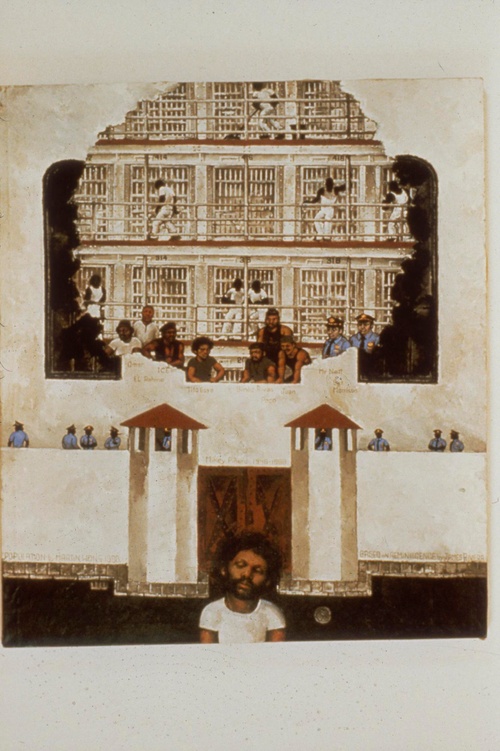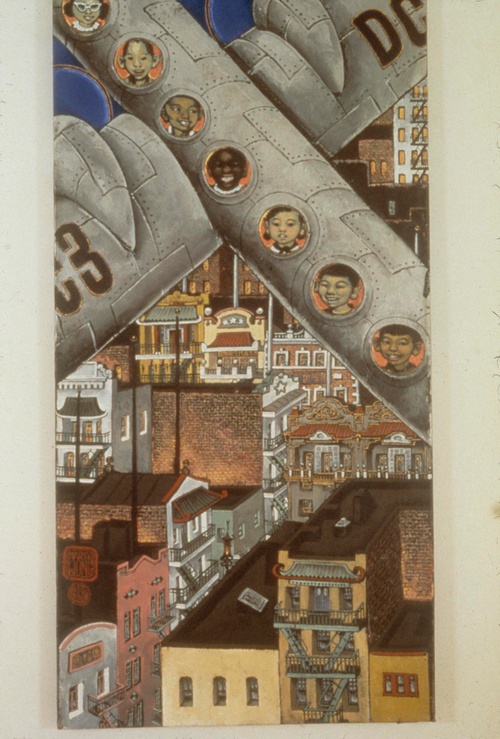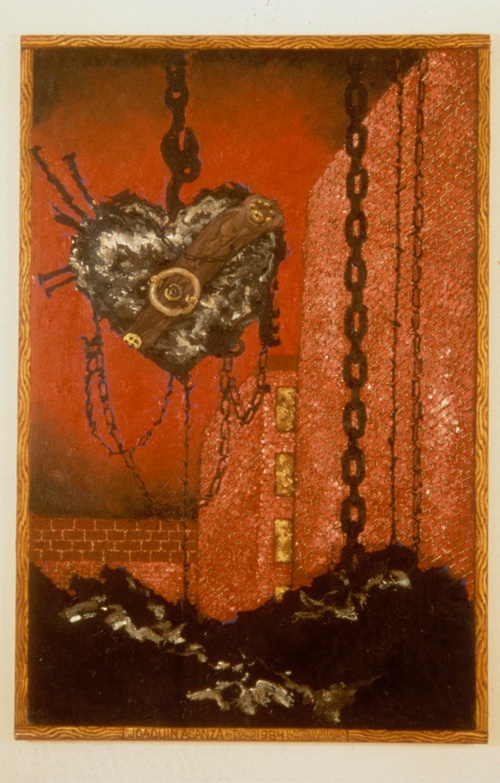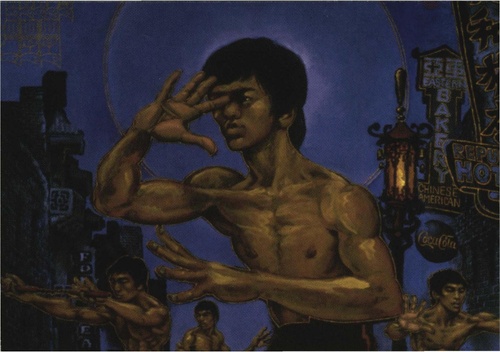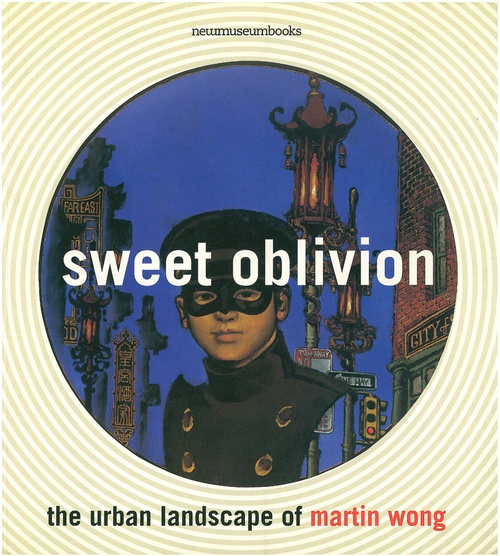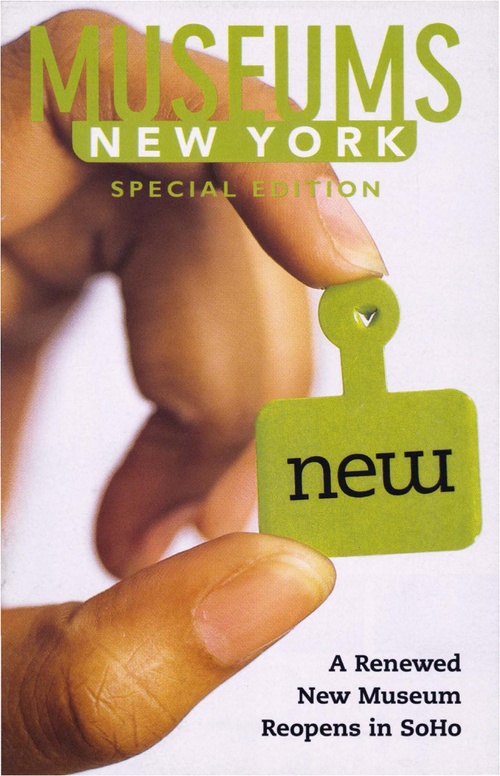Sweet Oblivion: The Urban Landscape of Martin Wong
Sweet Oblivion: The Urban Landscape of Martin Wong
Impelled by a deep sense of memory and a passion for narrative, Martin Wong explored the manifold realities of a vibrant urban culture, conveying his wonder at the vividness, even splendor, of dense environments outsiders might otherwise dismiss as destitute or garish. “Sweet Oblivion: The Urban Landscape of Martin Wong”, organized by the New Museum and the University Galleries of Illinois State University, where it was shown earlier in 1998, was the first museum retrospective of Wong’s work.
Wong’s paintings of the 1980s and early 1990s constituted an ongoing visual adventure in which writing and language were constantly contrasted with the physical existence of objects, buildings, and people. Bringing together such elements as street poetry, crumbling tenement facades, gilded constellation diagrams, and the stylized symbols of the hearing-impaired alphabet, Wong developed a complex exchange between representation and reality at the same time as he charts a world of seemingly unquenchable desire.
Martin Wong’s paintings embodied a directness and fearlessness of purpose missing from much American art of the time, so much so that his work seemed to be the product of a radically different place and time. Carlo McCormick, writing in the exhibition catalogue, stated that “Wong gives us an existential frame (a lonely window, an endless brick wall, the void of night) through which one may never pass physically but through which desire may always travel.” In a very real sense, Martin Wong had already done that to which many of us can only aspire - he had rebuilt the world in the image of his fondest hopes and dreams.1

